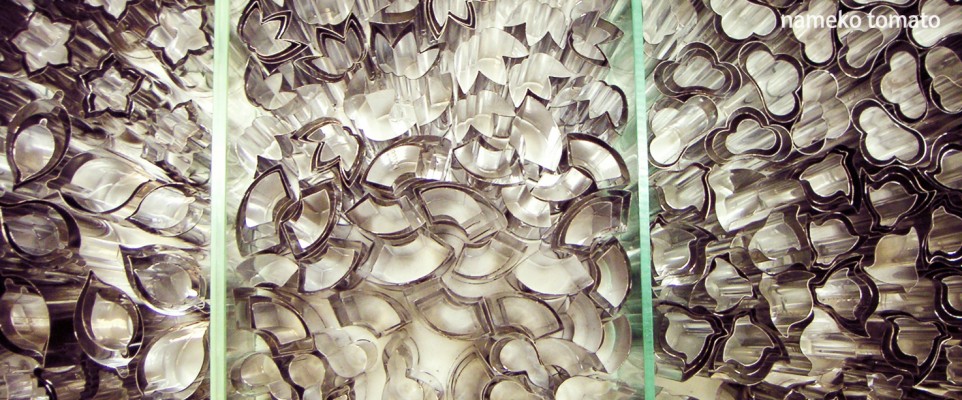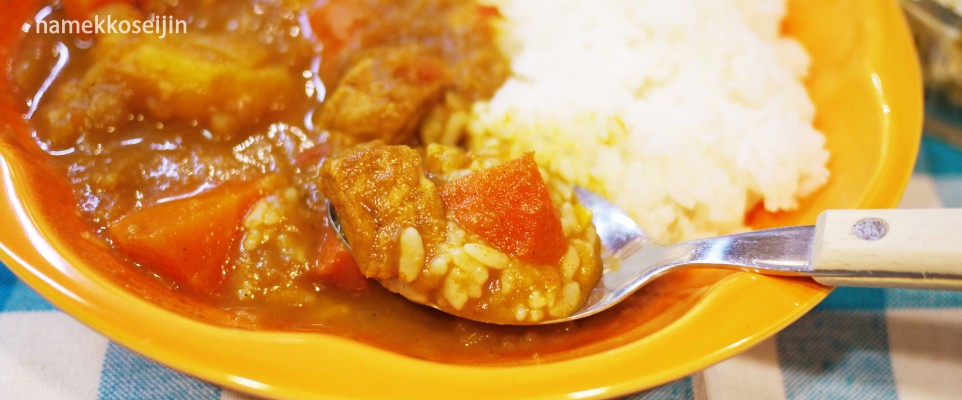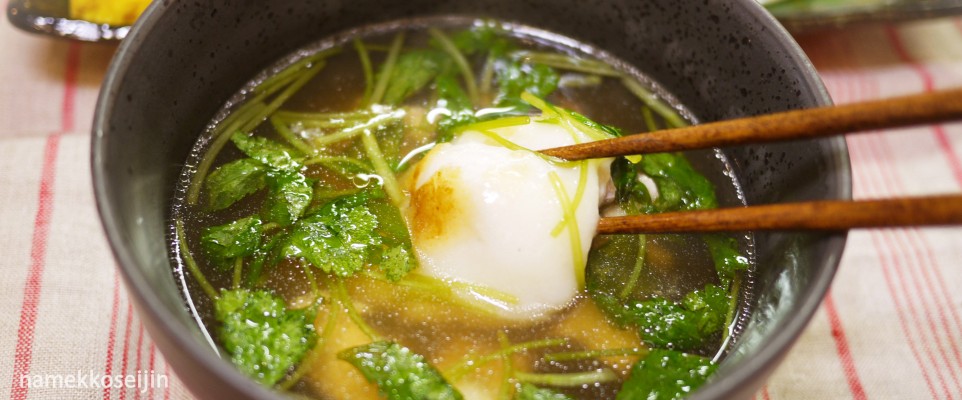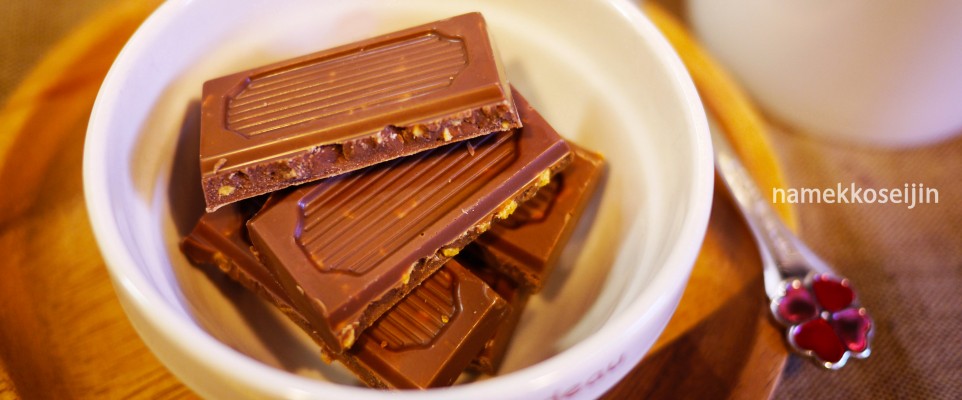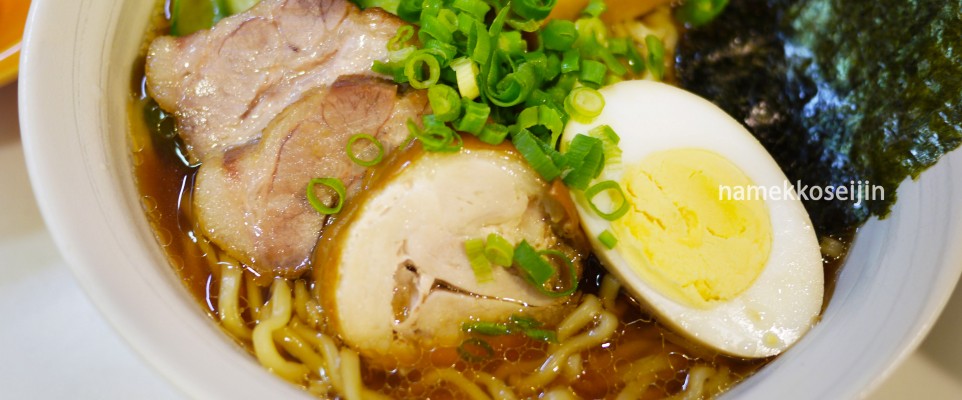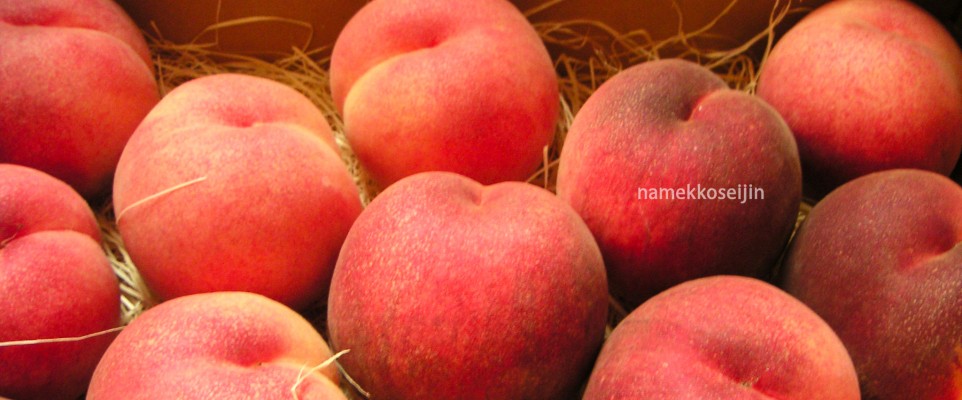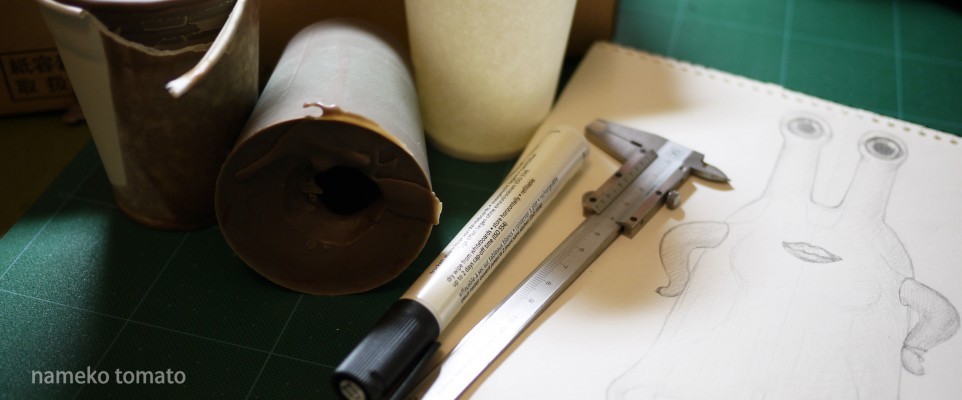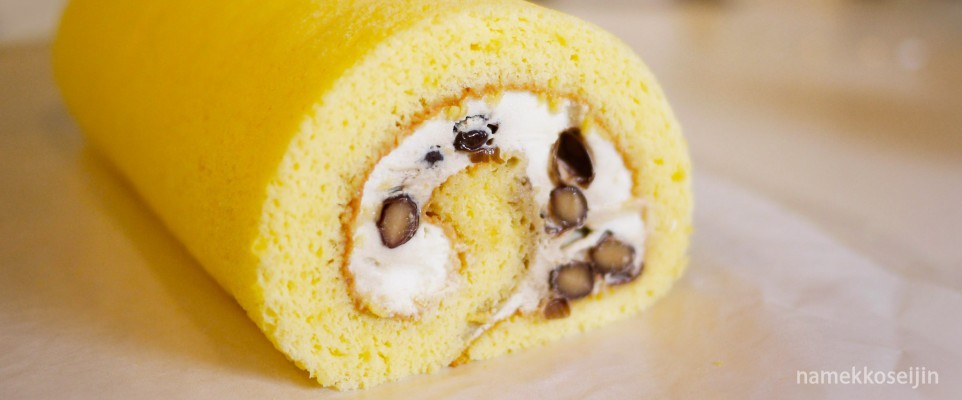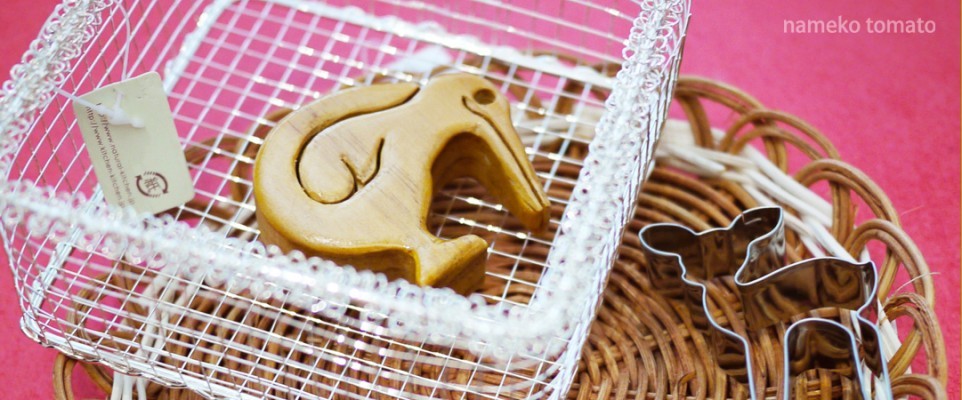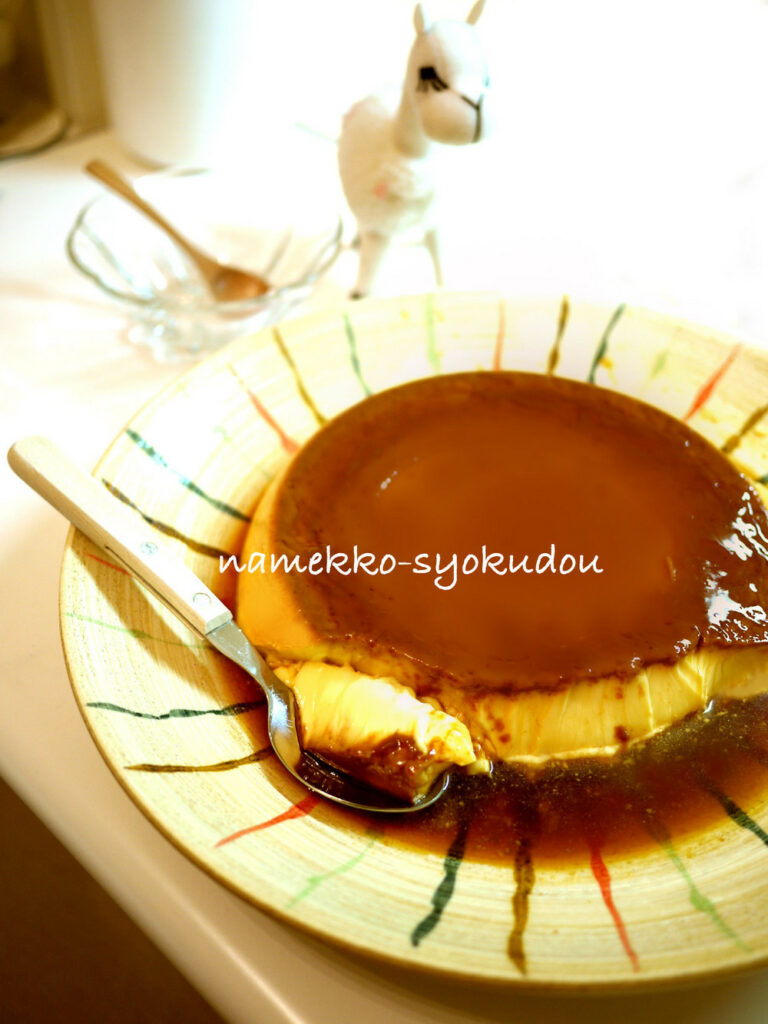This is a detailed supplementary memo for my recipe “●Easy to make in a rice cooker☆Smooth pudding that I am proud●“.
Please be sure to read the “●Additional notes on rice cooker recipes in general●” as well to avoid any accidents.
Click here to read the article in Japanese.
(日本語の記事はこちら)
I used to write in my diary on Cookpad. However, due to the number of characters and editing reasons, I have moved it to this blog.
I apologize for the inconvenience, but please use this nametomablog from now on.
●Prepare the ingredients
Pudding has very simple ingredients.
Therefore, it is better to use the freshest and tastiest milk, cream, and eggs possible.
This time we used cream with a fat content of about 35%, but you can use whatever you like.
If you want a simple taste without any peculiarities, granulated sugar is the best choice, but if you are health conscious, I recommend using sugar made from beet.
【Characteristics of beet sugar】
- Raw material is Tensai (beet)
- Mildly sweet
- Flavorful and full-bodied
- Contains natural oligosaccharides
- Slow rise in postprandial blood glucose level
- Contains minerals such as potassium, calcium, and phosphorus
It can be deepened without interfering with the taste and flavor of the ingredients.
●Be sure to use the “keep warm” mode for heating.
Be careful not to cook in rice cooking mode by mistake.
In the rice cooking mode, the temperature is too high and air bubbles are likely to form.
Heating time varies depending on the type of rice cooker and the amount of ingredients.
Ideally, the temperature should rise slowly to 80℃, the optimum temperature.
If the temperature is low, the pudding may not solidify easily, so if you can select the temperature for keep warm, select a higher temperature instead of a lower one.
If there are several types of “keep warm” mode, select the course closest to this one.
●If you want to flip the pudding.
If you use more than 6 eggs, you can flip the pudding.
If you use 6 eggs, the pudding will be about the consistency of silken tofu.
If you put a platter on top of the inner pot and flip the pudding over, it will fail because there will be a space between the pudding and the platter.
Please be very careful.
It is important to put a plate or something inside the inner pot and turn the pudding over at once while keeping it close to the pudding.
If you do not have a suitable plate, you can substitute a piece of cardboard or corrugated cardboard cut into a circular shape and wrapped in plastic wrap. If it is not strong enough, wrap it tightly after stacking several sheets.
The surface that touches the pudding should be as flat as possible so that it will slide easily when transferred.
It is also important to make sure that there are no gaps when it is placed inside the inner pot.
(If it is too large, it will not fit, and if it is too small, the surrounding area will collapse like a cliff after it is turned over.)
Immediately after turning it over, the bottom brown side is likely to crack and disintegrate, so be sure to hold the bottom side with your hand from above.
Tilt the dish and let it slide naturally while holding it with your hand to transfer it without collapsing.
●Small amounts can be cooked in a steamer

The container used should be heat-resistant and shaped so that it does not fall over.
You can also make your own steamer.
Here is another recipe I have written before, but if you do not know how to make it, please refer to this one.
You can also use it to cook other steamed dishes.
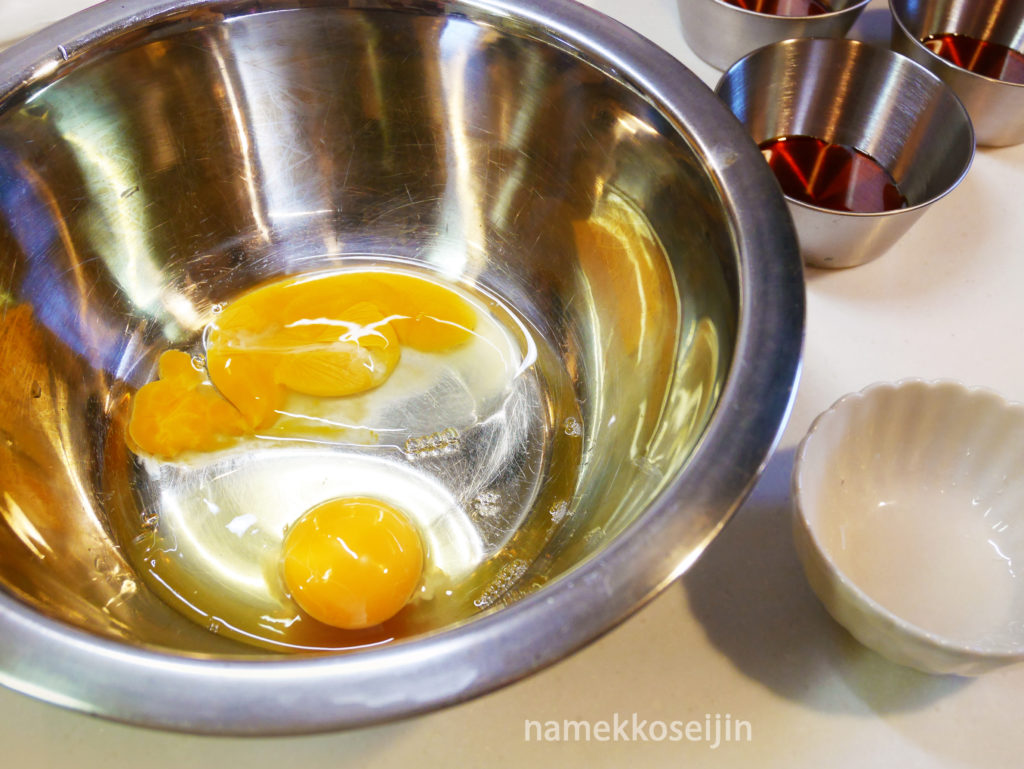
The other cooking steps are basically the same.
Please refer to “●Easy to make in a rice cooker☆Smooth pudding that I am proud●“.
The pudding in the photo is cooked with about half the quantity.
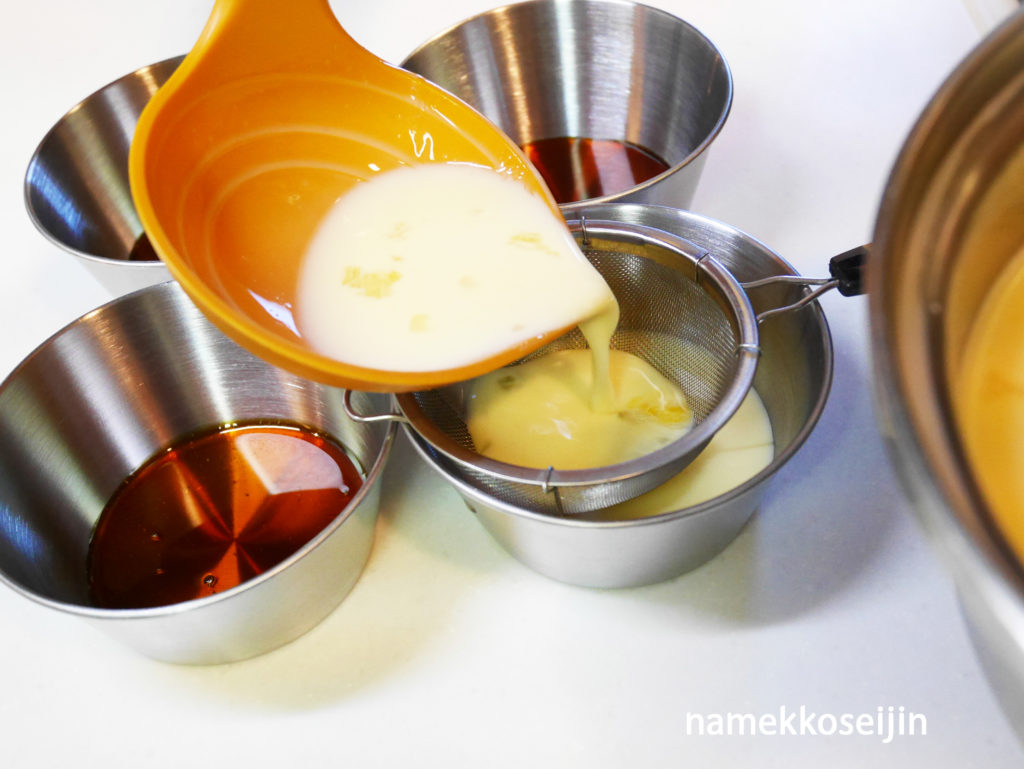
The cooking steps are different from the one shown in the photo, starting with step 10.
Pour the pudding liquid slowly, one at a time, using a tea strainer to strain please.
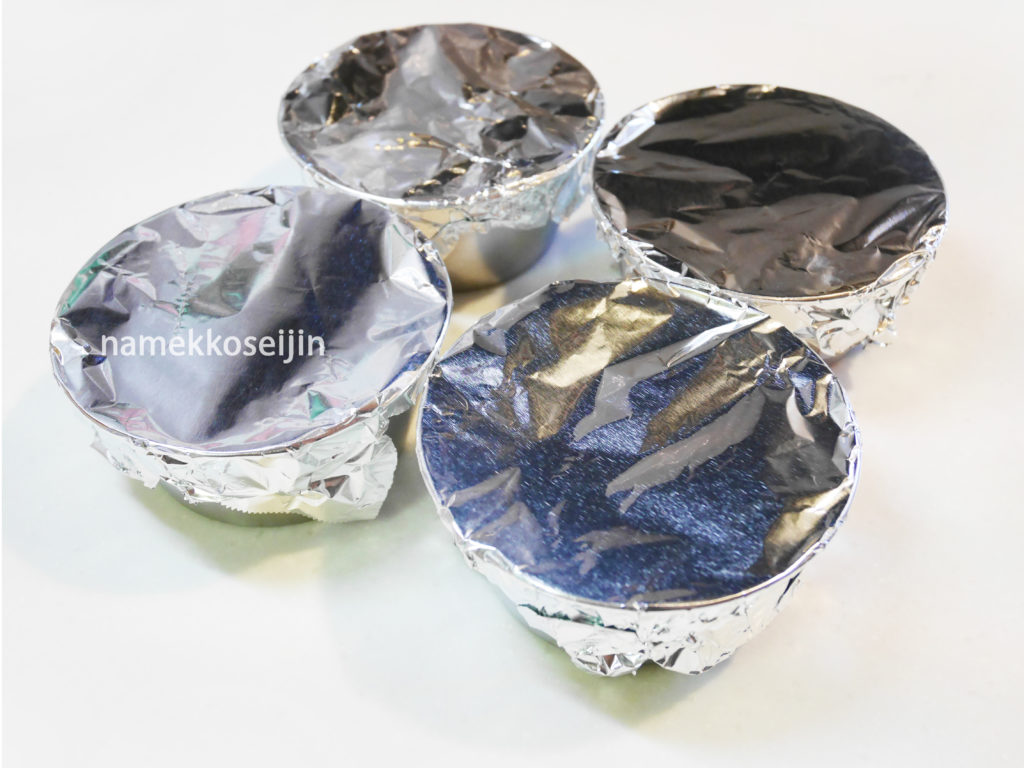
Cover with aluminum foil, etc. and steam to completion.
- Fill a cold steamer with water.
- Set the pudding in the steamer.
- Heat over high heat until steam comes out
- When steam comes out, turn down the heat to low.
- Place the lid on the pot with the lid slightly off and heat for 10 minutes.
- Check the pudding and turn off the heat when it has hardened to a certain degree.
- Heat for 10 minutes with residual heat.
Steaming time varies depending on room temperature, amount of pudding, cooking utensils, etc., but heating in this manner will ensure that the pudding cooks beautifully. ↑
Putting the pudding in after the steam rises may cause burns, so I set everything but the lid before heating.
There is less chance of panicking in the middle of cooking, so even those who are not good at steaming can cook with ease.
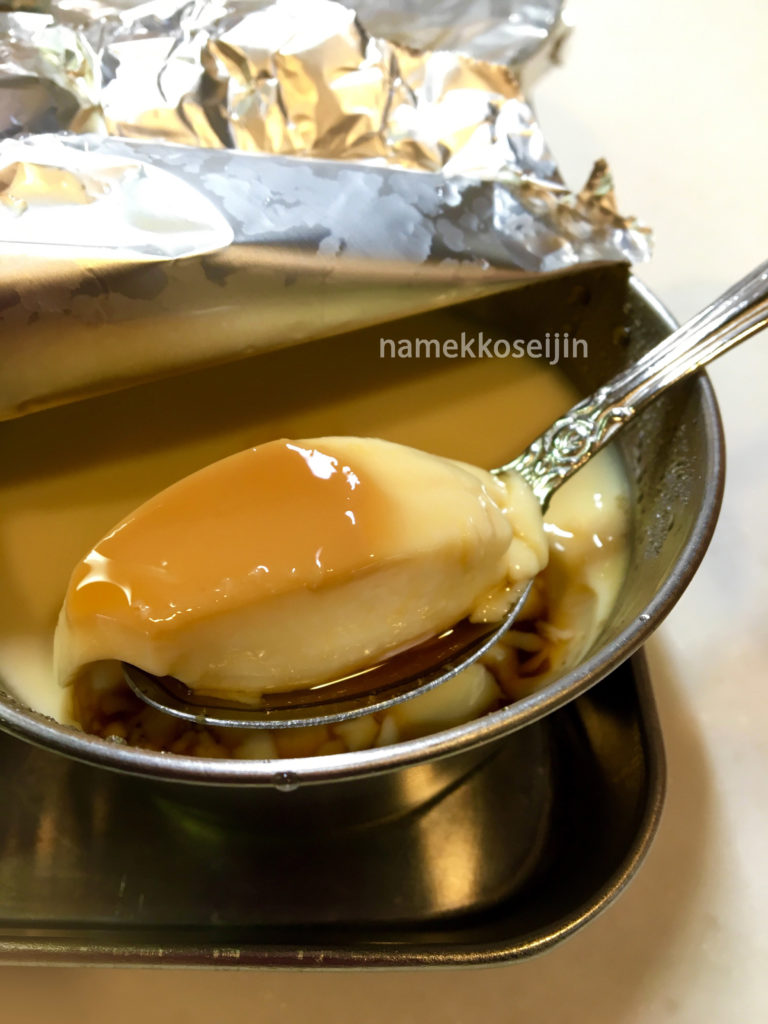
Handmade pudding tastes exceptionally good.
Both large and small puddings turn out much tastier than those from the store.
You may make mistakes when you are not used to it, but I hope these notes will be helpful.
|
|
|
|
|
|
〔本日も訪問ありがとうございます〕
何かございましたら、TwitterのDM(こちらかこちら)へお願い致します。
↓ ブログランキングに参加中。クリックしていただけると励みになります。
いつも応援ありがとうございます!
Thank you for visiting me today!
If you have any suggestions, please send me a message via Twitter (here or here).
↓ I am participating in the blog ranking. I would be very much encouraged if you click on the link.
Thank you for your support!![]()
人気ブログランキング

